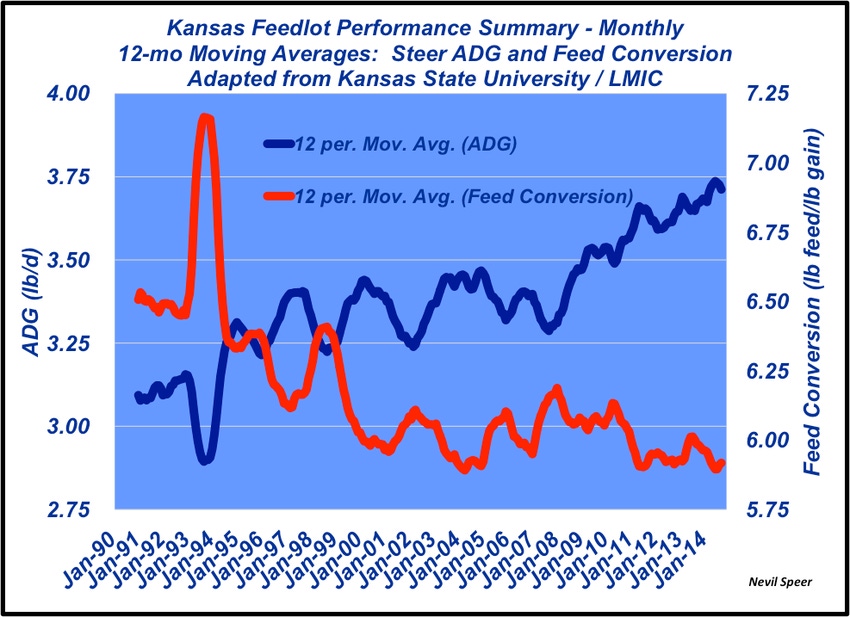The beef industry continues to make consistent strides toward improved productivity and efficiency.
October 14, 2014

Last week’s Industry At A Glance featured discussion around the enduring trend of heavier carcass weights over time. Most notably, a new record was established in September at 889 lbs., with seasonally heavier weights expected in the months to come. The discussion also included some of the contributors to the long-running trend. These include better genetics, more precise nutritional strategies, use of beta agonists, improved knowledge management and better overall cattle management.
Kansas State University produces a monthly summary of feedlot performance and feed costs across the state that dates back to 1990. The data series represents raw means from feedyards; as such, it isn’t weighted by the number of head reported. Nonetheless, the general trend provides some important insights.
The accompanying graph represents 12-month moving averages for both steer average daily gain (ADG) and steer feed conversion (on a dry-matter basis). Steers in 1990 had an ADG of 3.09 lbs./day and required 6.51 lbs. of feed for 1 lb. of gain. Fast-forward to 2014, and through August, the 12-month moving average is 3.71 lbs. and 5.92 lbs. for ADG and feed conversion, respectively.
Those gains represent improvements of 20% and 10%, respectively. It’s the equivalent of 1% and .5% annual improvement, respectively. It should be noted that the large spikes in the data series occurred because of harsh winter conditions in early 1993.
The beef industry continues to make consistent strides toward improved productivity and efficiency. Remember, these are averages, so there are cattle that far exceed these gain and efficiency benchmarks.
Similar to last week’s discussion on carcass weight, the inherent question surrounds the upper bounds of possibility. At what point does the industry reach or exceed some biological maximum in which these trends begin to level off? How soon might that occur? What drivers might cause a leveling-off, or a reversal, of the long-running trend?
Leave your thoughts in the comments section below.
You might also like:
Photo Tour: World's Largest Vertically Integrated Cattle Operation
Why You Must Remove Net Wrap On Round Bales Before Feeding To Cattle
15 New Products From John Deere
Why The Cattle Market Is At A Critical Juncture
What You Need To Know About The Beef Checkoff Drama
About the Author(s)
You May Also Like





